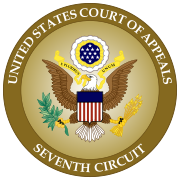Broadcast syndication is the practice of leasing the right to broadcasting television shows and radio programs to multiple television stations and radio stations, without going through a broadcast network. It is common in the United States where broadcast programming is scheduled by television networks with local independent affiliates. Syndication is less widespread in the rest of the world, as most countries have centralized networks or television stations without local affiliates. Shows can be syndicated internationally, although this is less common.

Television is one of the major mass media outlets in the United States. As of 2011, household ownership of television sets in the country is 96.7%, with approximately 114,200,000 American households owning at least one television set as of August 2013. The majority of households have more than one set. The peak ownership percentage of households with at least one television set occurred during the 1996–97 season, with 98.4% ownership.

WABM is a television station in Birmingham, Alabama, United States, affiliated with MyNetworkTV. It is owned by Sinclair Broadcast Group alongside Homewood-licensed CW affiliate WTTO and low-power ABC affiliate WBMA-LD ; Sinclair also operates Bessemer-licensed WDBB, which serves as a full satellite station of WTTO, under a time brokerage agreement (TBA) with Sinclair partner company Cunningham Broadcasting. However, Sinclair effectively owns WDBB as the majority of Cunningham's stock is owned by the family of deceased group founder Julian Smith.
An independent station is a type of television station broadcasting in the United States or Canada that is not affiliated with any broadcast television network; most commonly, these stations carry a mix of syndicated, brokered and in some cases, local programming to fill time periods when network programs typically would air. Stations that are affiliated with networks such as The CW, MyNetworkTV or to a lesser degree, even Fox, may be considered to be quasi-independent stations as these networks mainly provide programming during primetime, with limited to no network-supplied content in other time periods.

WNDU-TV is a television station in South Bend, Indiana, United States, affiliated with NBC. It is owned by Gray Television alongside Elkhart-licensed Heroes & Icons affiliate WSJV. Both stations share studios on the campus of WNDU-TV's founding owner the University of Notre Dame along State Road 933 on South Bend's north side, while WNDU-TV's transmitter is located southeast of the St. Joseph County Fairgrounds on the city's south side.
KSCW-DT is a television station in Wichita, Kansas, United States, affiliated with The CW. It is owned by Gray Television alongside Hutchinson-licensed CBS affiliate KWCH-DT. Both stations share studios on 37th Street in northeast Wichita, while KSCW-DT's transmitter is located in rural northeastern Reno County.
KHME is a television station in Rapid City, South Dakota, United States, affiliated with the classic television network MeTV. It is owned by Gray Television alongside ABC affiliate KOTA-TV and low-power Fox affiliate KEVN-LD. The stations share studios on Skyline Drive in Rapid City, where KHME's transmitter is also located.

WAGT, virtual and UHF digital channel 26, was an NBC-affiliated television station licensed to Augusta, Georgia, United States, which operated from December 1968 until May 2017.

WDBJ is a television station licensed to Roanoke, Virginia, United States, serving as the CBS affiliate for the Roanoke–Lynchburg market. It is owned by Gray Television alongside Danville-licensed MyNetworkTV affiliate WZBJ, channel 24. WDBJ and WZBJ share studios on Hershberger Road in northwest Roanoke; through a channel sharing agreement, the two stations transmit using WDBJ's spectrum from an antenna on Poor Mountain in Roanoke County.
KGHZ is a defunct television station in Springfield, Missouri, United States. Owned by Schurz Communications, the station was operated by Gray Television under a local marketing agreement (LMA) for its last four months on the air before its license was returned to the Federal Communications Commission (FCC) on May 31, 2017, as a result of the FCC's 2016 spectrum auction. KGHZ's transmitter was located on Switchgrass Road, north of Fordland. For most of its history, it served as the Springfield–Branson market's ABC affiliate, a role now served by KSPR-LD.
A weekday cartoon is the colloquial term for the animated series programming that was typically scheduled on weekday mornings and afternoons in the United States on many major television networks and in broadcast syndication since the 1960s.
Syndication exclusivity is a federal law implemented by the Federal Communications Commission (FCC) in the United States that is designed to protect a local television station's rights to syndicated television programs by granting exclusive broadcast rights to the station for that program in their local market, usually defined by a station's Nielsen Designated Market Area.

WKNX-TV is an independent television station in Knoxville, Tennessee, United States. It is owned by Lockwood Broadcast Group alongside Fox affiliate WTNZ. Both stations share studios on Executive Park Drive in Knoxville's Green Valley section, while WKNX-TV's transmitter is located on Sharp's Ridge, near the city's Oakwood section.

WWCP-TV is a television station licensed to Johnstown, Pennsylvania, United States, serving as the Fox affiliate for the Johnstown–Altoona–State College market. It is owned by Cunningham Broadcasting, which provides certain services to Altoona-licensed ABC affiliate WATM-TV under a local marketing agreement (LMA) with Palm Television, L.P. Both stations, in turn, are operated under a shared services agreement (SSA) by Sinclair Broadcast Group, owner of Johnstown-licensed dual NBC/CW+ affiliate WJAC-TV.

KSPR-LD is a low-power television station in Springfield, Missouri, United States, affiliated with ABC. It is owned by Gray Television alongside NBC affiliate KYTV and Branson-licensed CW affiliate KYCW-LD ; it is also sister to Branson-licensed tourist information–formatted station K17DL-D, channel 17. KSPR-LD, KYTV and KYCW-LD share studios on West Sunshine Street in Springfield, while KSPR-LD's transmitter is located on Highway FF north of Fordland.
The Prime Time Access Rule (PTAR) was a broadcasting regulation that was instituted in the United States by the Federal Communications Commission (FCC) in 1970 to restrict the amount of network programming that a local television station either owned-and-operated or affiliated with a television network can air during evening primetime hours. This rule was repealed by the FCC in 1996, though remnants remain.

WAGT-CD, virtual channel 26, is a low-power, Class A dual NBC/CW+-affiliated television station licensed to Augusta, Georgia, United States. Owned by Atlanta-based Gray Television, it is a sister station to CBS affiliate WRDW-TV. Both stations share studios at The Village at Riverwatch development in Augusta, while WAGT-CD's transmitter is located in Beech Island, South Carolina.
The Financial Interest and Syndication Rules, widely known as the fin-syn rules, were a set of rules imposed by the Federal Communications Commission in the United States in 1970. The FCC sought to prevent the Big Three television networks from monopolizing the broadcast landscape by preventing them from owning any of the programming that they aired in prime time. The rules also prohibited networks from airing syndicated programming they had a financial stake in.
WGTW-TV is a religious television station licensed to Millville, New Jersey, United States, owned and operated by the Trinity Broadcasting Network (TBN). It previously served the Philadelphia, Pennsylvania television market, but can now only be received in Southern New Jersey. The station's studios are located on Columbia Avenue in suburban Folcroft, Pennsylvania; its transmitter was previously located in the Roxborough section of Philadelphia, but is now shared with True Crime Network affiliate WMGM-TV along Avalon Boulevard in the Swainton section of Middle Township, east of the Garden State Parkway off Exit 13.

KNEP, virtual channels 2 & 4, is a dual NBC/ABC-affiliated television station serving Scottsbluff, Nebraska, United States and the Nebraska Panhandle. Licensed to the nearby town of Sidney and owned by Atlanta-based Gray Television, it is a sister station to Scottsbluff-licensed CBS affiliate KSTF. KNEP's studios are located on 1st Avenue in Scottsbluff, and its transmitter is located in Angora, Nebraska.









